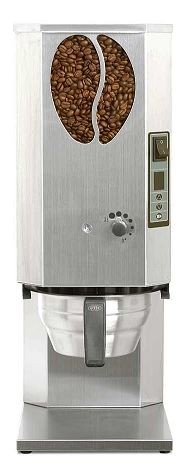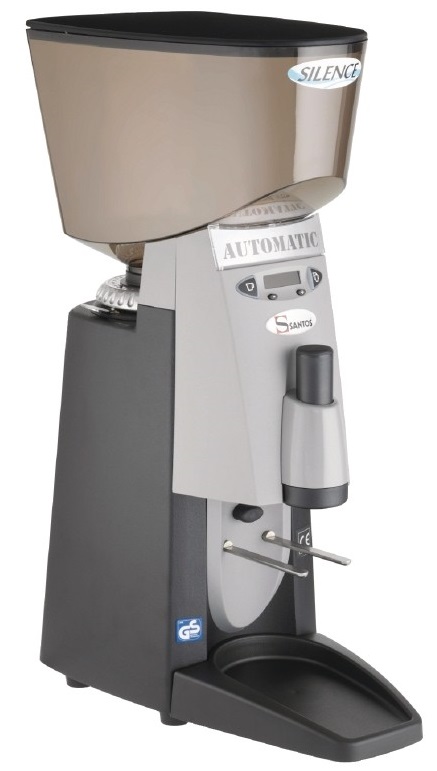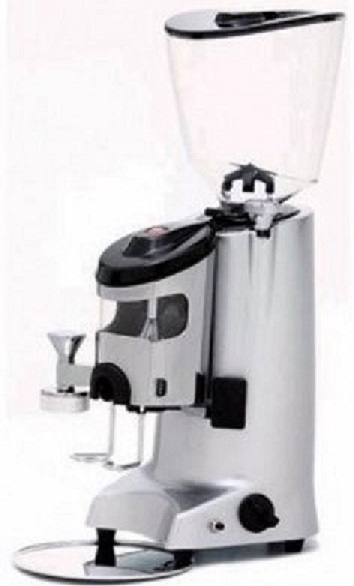
Espressos are many people's preferred way to get their daily jolt of caffeine, whether first thing in a morning, during the afternoon when fatigue sets in or before heading out for the evening after a long day. Espressos contain a high volume of caffeine in a small dose and when prepared correctly can be a delicious way to perk you up.
Many coffee shops often spend a great deal of time researching the best coffee and espresso machines for their business to guarantee they can offer the finest quality products to their customers. Equal amounts of effort, however, should also be placed into the purchase of the right grinder. You may have the perfect water temperature, quality ingredients and a top of the range espresso machine however without quality ground beans to begin with, the end result will never be as good as it could be. If you pride your business on only serving premium products then you must make sure you have the right tools to begin with.
If you plan to spend a large sum of money on an espresso maker then you must also be prepared to budget a generous amount for a grinder, after all a quality coffee relies on a quality grinder.
Choosing the right Coffee Grinder
Stepped or Stepless?
Coffee grinders will generally have a feature that allows the user to select the coarseness of the grounds. Each type of coffee will require a differing coarseness, for example much coarser grounds are used for French press coffee whilst the grounds used for making espressos are much finer. The method for setting the level of coarseness will have an effect on the end result.
Grinders will fall into one of the following categories.
Stepped grinders

Stepped grinders tend to have preset thickness levels, easily changeable with a labelled dial. The dial will range from coarse French press through to finer espresso. Once the dial is pointed at the desired setting, the grounds will be produced to the optimum coarseness through the stepped process. Some people may think that this single dial setting will limit their options however some grinders can have up to forty different coarseness levels.
Stepless grinders
This type of grinder relies heavily on the experience, skill and judgement of the user. The control handle has a fluid motion that is set by hand therefore there are no preset coarseness levels and the quality of the grounds is solely dependent on the user’s personal judgement. Stepless grinders give an independence to the business as they are not limited by factory settings, however unless the user has a good knowledge of the machine and the desired coarseness of the grounds, the end result may be hard to achieve.
Choosing the best grinder for your business will heavily rely on your personal requirements, the beverage selection you offer and the experience of your staff.
With or Without Dosing Compartments?
Another aspect that must be looked into when purchasing your coffee grinder is the way in which the dose of coffee beans is measured into the machine. Grinders will fall into one of two categories; those with dosing compartments or those without. Dosing compartments can be useful and are a good time saving tool in busy coffee shops, however when using various different varieties of coffee beans you may find that a doserless model is better suited.

Grinders with dosing compartments
These grinders allow the user to put an unmeasured quantity of coffee into the machine to be stored in the dosing compartment. Each time the grinder is used it will only dispense the correct measured quantity into the filter. These models also have the added benefit of catching any coffee grounds that make a bid for freedom and prevent them from falling onto your countertop, meaning less cleaning.
The disadvantage with these models is that often the user will prepare large quantities of coffee grounds to save time during busy periods. Although this seems sensible and efficient it does mean that the quality of the grounds deteriorates the longer the coffee sits in the dosing compartment. A quality coffee will only be achieved with the freshest grounds possible. To make a superior espresso you should only use freshly ground coffee that has not been left to rest in a dosing compartment.
Grinders without dosing compartments
These models operate by the user dispensing the grounds directly into the filter. While this means that your customers are guaranteed only the freshest coffee it also leads to a much larger mess when the utmost care is not taken. During busy rushes of custom the added measuring involved, not to mention the increased amount of cleaning leads to more work and more flustered serving staff.
Burr or Blade?
The last aspect that should be taken into consideration when investing in the right coffee grinder is the method in which the coffee beans are ground. Typically, there are two options; burr grinders and blade grinders. Blade grinders feature a rotating blade located at the bottom of grinding cavity. Burr grinders also spin however have teeth that chew through the beans once rotation occurs. Blade grinders are often found in the domestic environment however burr grinders offer a more professional finish and higher quality end product.
Burr grinders

This method for grinding beans is the most preferred in commercial businesses. The teeth offer a crunching motion that effectively release the full flavours of the beans. Although the end result is nothing short of perfection there are a few drawbacks. Burr grinders are manufactured to be ultra efficient therefore will grind coffee to the perfect consistency in approximately 20 – 30 seconds. If these grinders are used for over a minute, the rotating blades will heat up quickly and can actually burn the coffee grounds. This results in a bitter tasting espresso product.
Burr grinders are available with either conical or flat burrs, each option having their own advantages and disadvantages. Conical burrs tend to be on average slightly larger than flat burrs and therefore spin at a slower rate. The reduced speed means that there is less heat build up and hence less chance of the coffee grounds being subjected to burning. Flat burrs, although rotating at a quicker pace with increased heat build up are believed to offer a more consistent grinding performance.
Blade grinders
These coffee grinders do not offer consistency and therefore are not suitable for professional use. Grounds that are not uniformed will not pack firmly into the filter therefore espresso produced will not be consistent in taste. If you are looking for a grinder that is workable in a domestic environment for traditional coffees then blade grinders will be a more acceptable selection.
If your business is serious about coffee and insists on only serving quality coffees and espressos then you must invest in the right coffee grinder for your needs. By assessing which elements are important to your beverage service you will ensure that the ideal investment is made and will also guarantee that you offer superior espresso with each and every serve.


